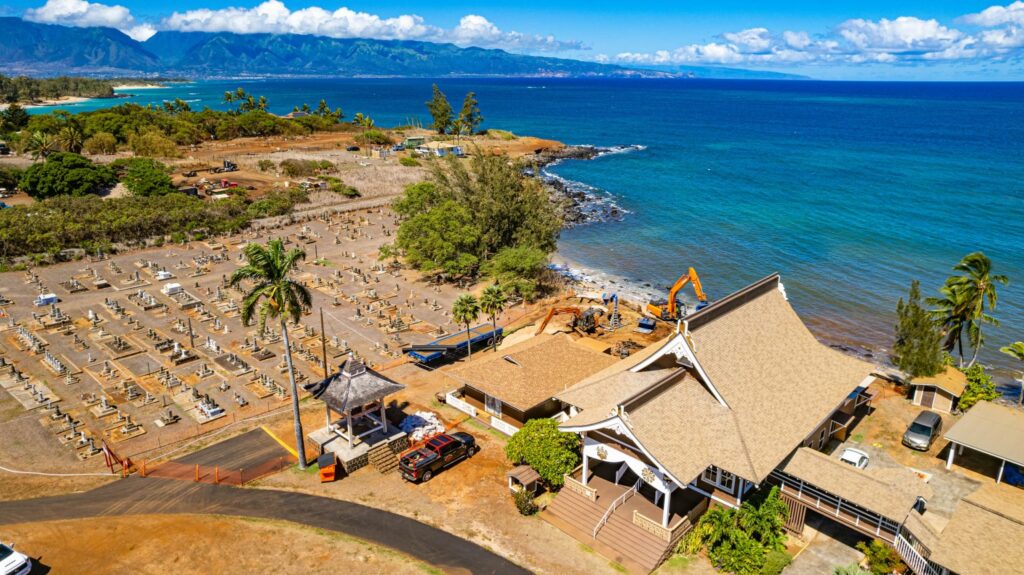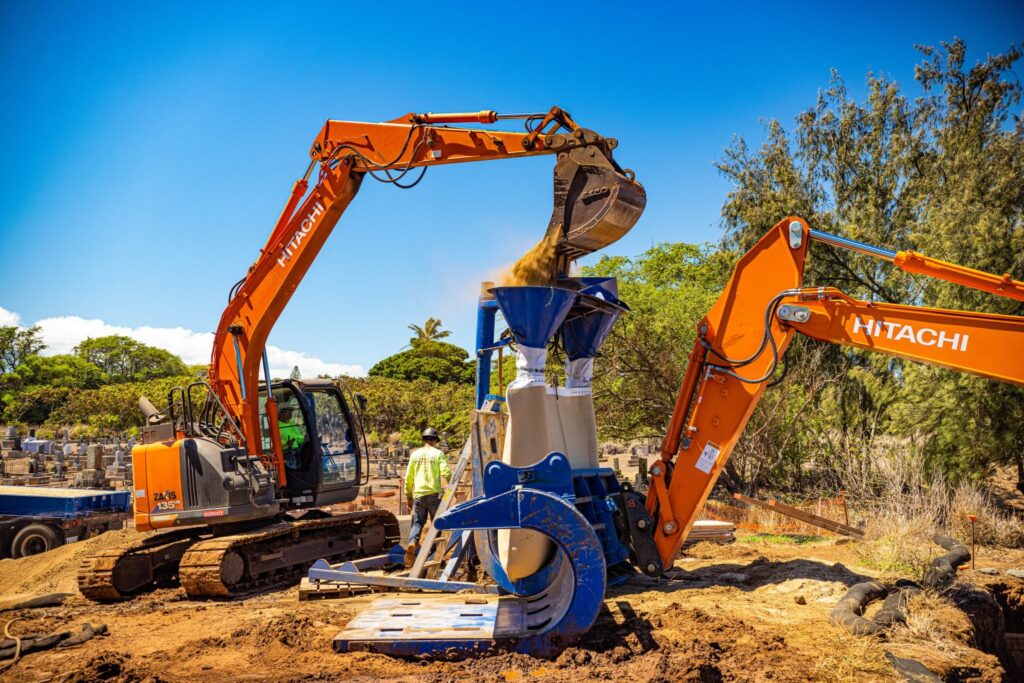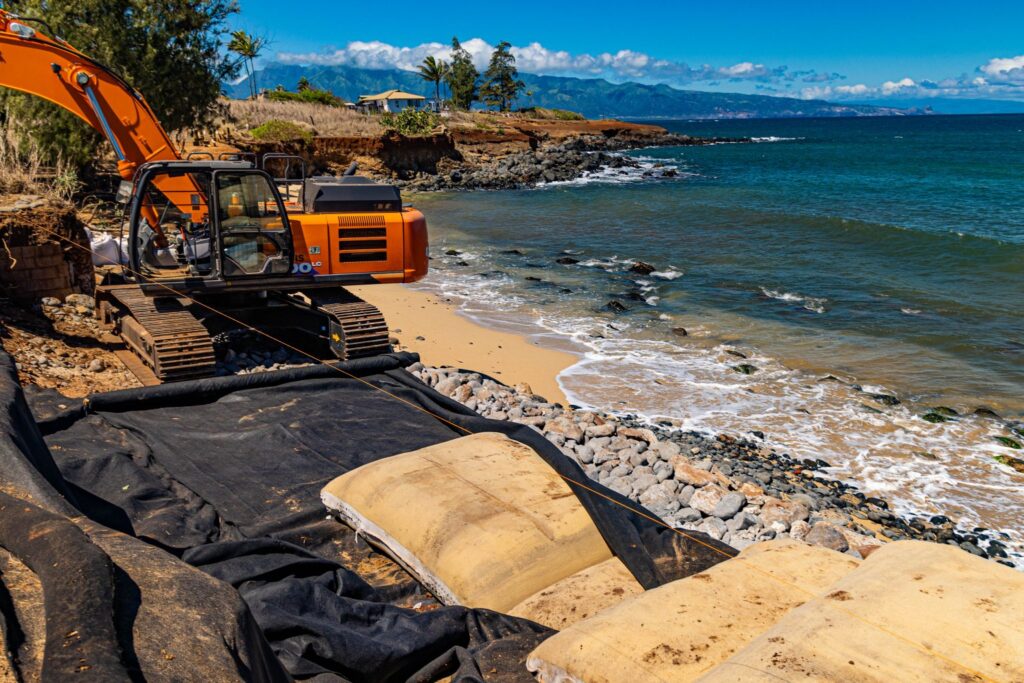In recent years, the impact of coastal erosion on natural resources, property and infrastructure has intensified across the Hawaiian Islands. By 2012, 13 miles of beaches around the state had vanished, and 70% of the remaining beaches were already under threat. Located on Maui’s north shore, Mantokuji Bay is a unique place suffering the common impacts of climate change and environmental degradation.
Oceanit has been working with the Mantokuji Mission Board of Directors at the Paia Mantokuji temple to devise a solution for the bay’s eroding beach and collapsing coastal bluffs. Oceanit’s RiSE team has conducted engineering assessments and erected a temporary erosion control measure seaward of the historic temple to protect the temple and the public safety. In addition, Oceanit aided in the permitting process and consulted with the State and Maui County government agencies on long-term strategies.



The Paia Mantokuji is a Soto Zen Buddhist temple founded in 1906 by Reverend Sokyo Ueoka in Maui’s Paia town. The temple was originally founded to serve the Japanese immigrant community and today it continues to be an important gathering place for many local residents. The people of Paia cherish the events held there including the O-Bon Dance Festival, annual bazaar and weekly mediation practices. The temple grounds also include a cemetery with engraved grave markers along the shoreline of Mantokuji Bay.
By 2021, accelerating erosion had caused dozens of century-old headstones in the temple’s cemetery to topple into the sea. The temple building itself now sits only within feets from the eroding shoreline. Since the temple’s construction, the property has lost at least half an acre of land. According to a study by the Coastal Geology Group at the University of Hawai’i, the Mantokuji Bay shoreline is moving inland at an average rate of about 1.6 feet per year. Recently this rate seems to have accelerated and the pressure is on us, as a community, to find a solution.
One of the drivers of the severe coastal erosion at Mantokuiji Bay is due to its geology. Unlike the adjacent rocky shorelines, the red clay alluvium soils along the shoreline are erosive under wave attacks. In addition, the bay has lost its protective sand beach due to sand mining and previous storm events including the April Fools’ Day tsunami in 1946. Documents show that since the 1930’s, the County of Maui had mined the sand on Mantokuji Beach for use in public works projects including roads and buildings.
Oceanit helped to install an emergency erosion control measure, commonly known as a sandbag revetment. These structures consist of large sand-filled containers made of geotextile fabric and high-quality sand that is compatible with the beach environment was used to fill the robust bag material. These sandbags is intended as a temporary buffer that will absorb wave impacts to help protect public safety while longer-term solutions are developed. Sandbags alone cannot protect the Mantokuji community for long.
Oceanit hopes to work with our community partners to address the erosion in the long term by implementing a beach restoration plan. Although this solution is a work in progress, Oceanit Foundation has taken an important step by initiating the Climate Change Toolkit project.

